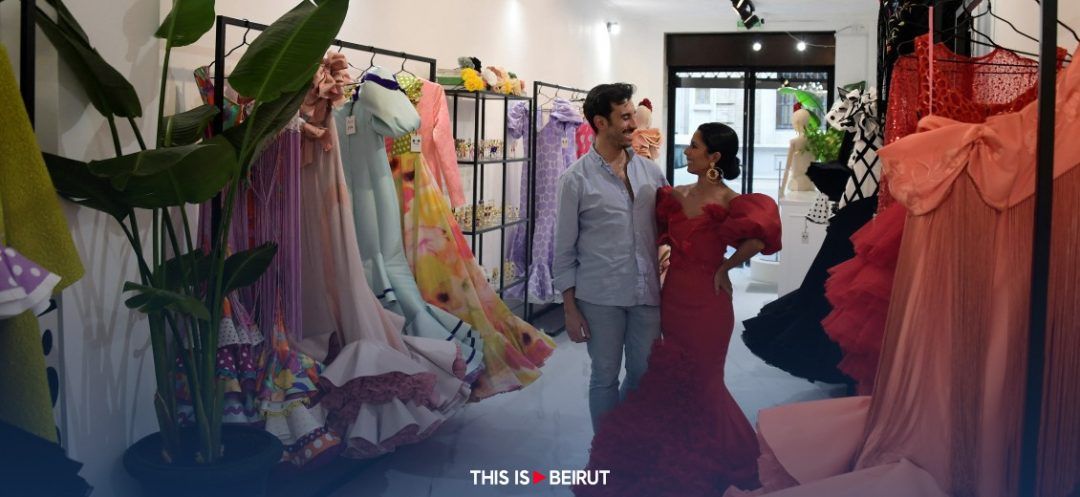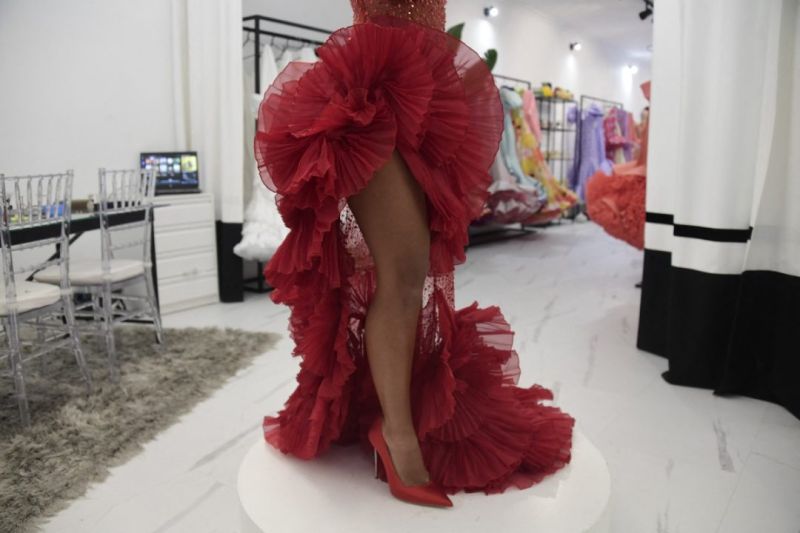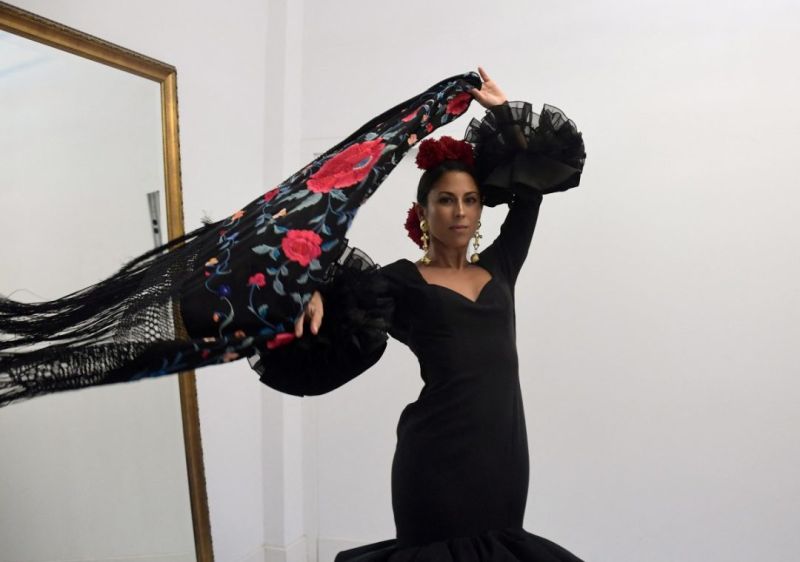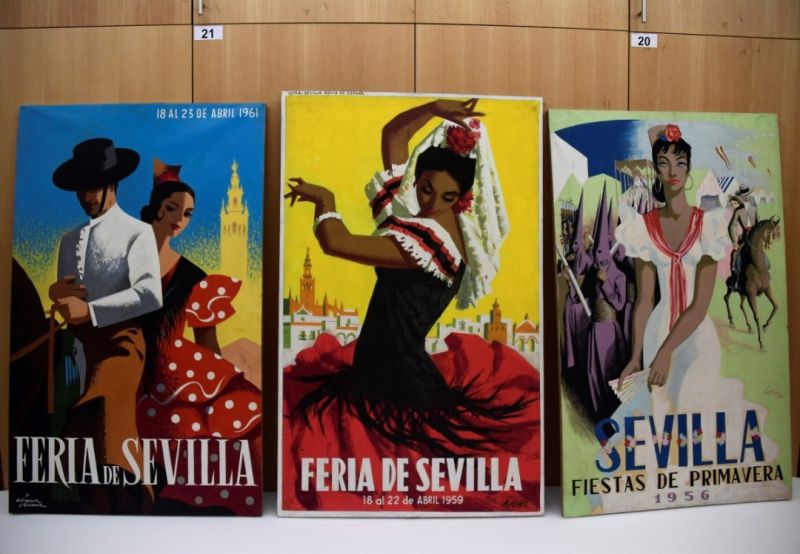
©Photo by Cristina Quicler/AFP
As Seville’s annual feria approaches, the city’s flamenco dress designers work tirelessly to create stunning gowns that embody the essence of Andalusian tradition and style.
In the heart of Seville’s Old City, Luis Fernandez’s workshop buzzes with activity as customers flock to try on his stunning collection of flamenco dresses. The vibrant fabrics, adorned with voluptuous ruffles and playful polka dots, are a testament to the enduring allure of this iconic Andalusian fashion.
Flamenco fashion reaches its zenith during the spring when towns and cities across southern Spain’s Andalusia region hold their annual week-long ferias. During these festivities, participants don their finest attire to indulge in food, drink and dance until the early hours of the morning.
One customer, Virginia Cuaresma, stands before the mirror as Fernandez meticulously adjusts her traditional midnight blue gown, complete with ruffles on the skirt and sleeves. She tries on an aquamarine dress paired with a matching embroidered fringed shawl, as well as a modern red dress that reveals a daring amount of skin.
 Photo by Cristina Quicler/AFP
Photo by Cristina Quicler/AFP"Right now, everything is in chaos, we’re up to our eyes… these are the last few fittings," Fernandez explains, referring to the final alterations before clients collect their gowns and immerse themselves in the feria experience.
The most traditional flamenco dress design, which has remained largely unchanged for over a century, features a floor-length skirt that fits snugly to the thigh before flaring out in a ruffled cascade. Matching ruffles adorn the sleeves, and women accessorize with a fringed shawl, earrings, bracelets and a flower-adorned hair comb. This ensemble has become synonymous with Andalusia and is even used abroad as a symbol of Spain.
Fernandez believes that the flamenco dress enhances a woman’s natural beauty, highlighting the contrast between the narrow waist and the hips and bust in a flattering "hourglass silhouette." For Cuaresma, wearing a flamenco dress to the feria is a way to preserve Andalusian traditions and connect with her late grandmother, who used to sew these dresses during her childhood.
The origins of the flamenco dress can be traced back to the "majo" costumes worn by working-class Spaniards in the late 18th and early 19th centuries, as depicted in the paintings of Spanish master Goya. As the Seville fairs gained popularity in the mid-19th century, the wealthy classes began adopting this style as a counterpoint to aristocratic French fashions. The influence of gypsy women’s ruffled dresses and skirts, worn while selling doughnuts at the fair, also played a role in shaping the flamenco dress’s evolution.
 Photo by Cristina Quicler/AFP
Photo by Cristina Quicler/AFPBy the 20th century, the flamenco dress had taken on its current form and gained widespread popularity, thanks in part to the growth of flamenco as an art form and the proliferation of schools teaching this captivating Andalusian dance. During the 1960s, the dictatorship of General Francisco Franco capitalized on the dress’s appeal, using it as a symbol of "Spanishness" to promote tourism.
In recent years, the flamenco dress has inspired renowned designers such as Christian Dior, who showcased a collection in Seville’s iconic Plaza de Espana in 2022. Fernandez notes that the Seville flamenco fashion sector has become increasingly professional, with designers drawing inspiration from trends in Paris and Milan and showcasing their creations at an annual international flamenco fashion show in the city since 1995.
 Photo by Cristina Quicler/AFP
Photo by Cristina Quicler/AFPWhile an outfit from a high-end atelier like Fernandez’s can cost upwards of a thousand euros, the increasing accessibility of fashion has made more affordable options available. This is welcome news for women like Cuaresma, who purchase at least one new flamenco dress each year to avoid repeating the same outfit at the feria’s opening day.
With AFP
Read more




Comments